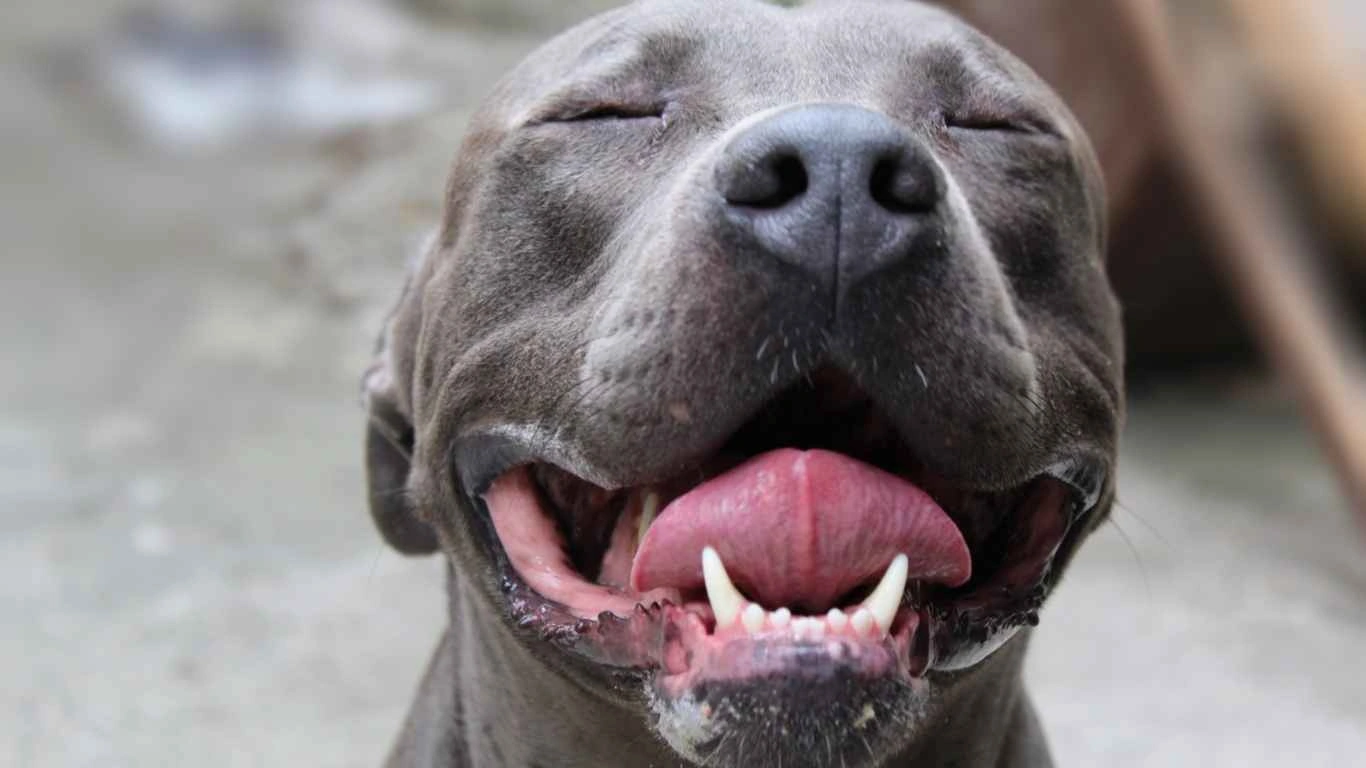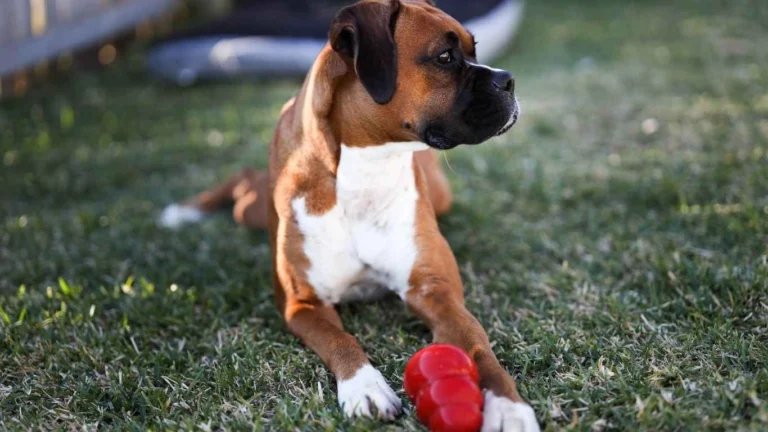High-Protein Diet Guide for Working Dogs: Boost Energy & Health
When it comes to working dogs, their dietary needs are on a whole different level. Whether it’s a police K9, a sled dog powering through snowy trails, or even a high-energy farmhand keeping things in order, what you feed them matters more than most people realize. How to prepare a high-protein diet for working dogs isn’t just a hot topic—it’s a must-know if you’ve got a four-legged partner who gives their all every day. I’ve seen firsthand, both in shelters and in clinic settings, how nutrition can completely change a dog’s energy, focus, and even behavior. So let’s get into it and break it down in a way that makes sense without the jargon overload.
Why Working Dogs Need More Protein Than the Average Pup

Most pet parents know dogs need protein, but the level of protein required for a working dog is a whole different ball game. These dogs are basically athletes—they burn more calories, use more muscle, and deal with more physical and mental stress on a daily basis. In my clinic days, we often had handlers come in saying, “He just doesn’t have the same energy anymore.” Nine times out of ten, the issue was the diet.
Here’s the deal—protein is the building block of muscles, and it also plays a key role in hormone production and immune function. So if your working dog’s food isn’t stacked with the right amount (and type) of protein, they’re not going to perform at their peak.
Signs Your Dog Might Need More Protein
- Low energy levels or getting tired too quickly during tasks
- Visible muscle loss or lack of definition
- Coat looking dull, flaky, or shedding more than usual
- Increased susceptibility to illness or injury
I’ve treated dogs who were incredibly active yet were being fed kibble designed for sedentary house pets. It’s like expecting a marathon runner to thrive on fast food every day—not going to cut it.
Choosing the Right Protein Sources

Not all protein is created equal. And that’s something I learned quickly once I started working hands-on with performance dogs. You want bioavailable protein—meaning it’s easy for your dog to digest and actually use. Animal-based proteins are king here: think chicken, beef, lamb, turkey, eggs, and fish. And yes, raw can be a great option, but it needs to be done carefully (more on that later).
Best High-Protein Foods for Working Dogs
- Chicken: Lean and affordable, but rotate with other meats to avoid sensitivities.
- Beef: High in iron and a great muscle builder—just watch the fat content.
- Fish: Rich in omega-3s, which help with inflammation and coat health.
- Eggs: Highly digestible and great for adding shine to their coat.
- Lamb: Great for dogs with allergies to more common meats.
If you’ve got access to organ meats like liver or kidney, those can be excellent additions too. They’re packed with nutrients that support energy production and stamina. I always tell folks—don’t just feed muscle meat, mix it up for full nutritional coverage.
How Much Protein Is Enough?

One of the most common questions I get is, “Okay, but how much protein is the right amount?” And honestly, it depends. Breed, size, age, and workload all play a role. But generally, for a working dog, you want protein levels to be around 25% to 35% of their total daily diet—sometimes even more during intense training or competition seasons.
To give you an idea, a sled dog in training might need upwards of 5000 calories a day with 30% of that coming from protein. That’s wild compared to the average couch potato dog who gets by on 1000 calories and 18% protein!
Quick Tip: Always Read the Label
Look at the guaranteed analysis on commercial food. If protein’s not the first listed macronutrient, it’s probably not high enough for a working dog. Also, make sure the protein is from named meat sources (like “chicken meal” or “beef”) and not vague terms like “animal by-product.”
And here’s a personal pro tip: if you’re going the homemade or raw route, make sure to work with a vet nutritionist. I’ve seen some well-intentioned pet parents unintentionally throw off the balance of calcium, phosphorus, and other minerals while trying to feed more protein. It can cause more harm than good if you’re not careful.
Balancing Protein with Other Nutrients

Now, here’s where a lot of people slip up—they focus so much on how to prepare a high-protein diet for working dogs that they forget protein is just one piece of the puzzle. And believe me, I’ve seen dogs crash energy-wise not because they didn’t get enough protein, but because they were missing essential fats, carbs, or even hydration support.
One client at the clinic had a Belgian Malinois on a heavy raw diet, stacked with meat but low in fat and fiber. The poor guy looked ripped, but he was struggling with endurance and had digestion issues. Once we added some healthy fats and low-glycemic carbs into his meals—bam, totally different dog within two weeks.
The Nutrient Trio Every Working Dog Needs
- Fats: Primary energy source. Think salmon oil, chicken fat, flaxseed oil.
- Carbohydrates: For stamina and fiber. Go for sweet potatoes, oats, brown rice—not corn fillers.
- Micronutrients: Zinc, calcium, B vitamins, and magnesium keep the metabolism and joints humming along.
For the DIY feeders out there—don’t wing it with guesswork. Use canine-specific nutrient calculators or, better yet, chat with a canine nutritionist. It’s worth it, especially when your dog’s job is high-performance.
Homemade High-Protein Dog Food Recipes (That Actually Work)

Alright, let’s get into some kitchen action. If you’re anything like me, sometimes it’s just easier (and honestly more fun) to prep the food yourself. I’ve whipped up meals for foster dogs recovering from surgery, older working dogs slowing down, and young pups just starting their training journey.
Simple Chicken & Sweet Potato Power Bowl
- 2 cups cooked shredded chicken (no skin, low fat)
- 1 cup cooked mashed sweet potato
- 1/2 cup chopped spinach (lightly steamed)
- 1 tbsp fish oil
- Pinch of calcium powder or ground eggshells
Mix it all together, let it cool, and portion based on your dog’s size. I usually prep a big batch on Sundays and refrigerate or freeze portions. Dogs go wild for this—especially the picky eaters.
Beef, Egg, & Quinoa Muscle Fuel
- 1 cup lean ground beef (drain excess fat)
- 2 hard-boiled eggs (chopped, include shells if finely ground)
- 1/2 cup cooked quinoa (great protein boost from a grain)
- 1/2 cup chopped carrots or green beans
- Dash of kelp powder or seaweed flakes (for iodine)
Again, keep it simple. No salt, no seasonings. Just clean, whole foods that fuel your dog right. I’ve seen skin conditions clear up and energy levels jump just from switching to homemade diets like this one.
Supplements That Support High-Protein Diets

Even the best home-prepared or raw diets sometimes fall short on the micro level. That’s where supplements come in. And no, you don’t need to go overboard. A few key add-ins can make a massive difference—especially for working breeds putting in those long days.
Top Supplements to Consider
- Fish Oil: Omega-3s support joint health, reduce inflammation, and help with coat shine.
- Glucosamine & Chondroitin: Essential for joint protection, especially if your dog does high-impact work like agility or herding.
- Probiotics: Good gut health equals better nutrient absorption and a stronger immune system.
- Multivitamin Powder: Use sparingly, just to fill in any nutritional gaps.
One time, we had a retired K9 officer who came into the shelter with creaky joints and no appetite. After we got him on a simple diet with fish oil and joint support, he was jogging with his foster family within a month. No meds—just food and a few smart tweaks.
Common Mistakes to Avoid When Feeding a High-Protein Diet

Even well-meaning dog lovers can go wrong with high-protein diets. I’ve seen it all—from folks feeding nothing but beef trimmings (too fatty!) to others going grain-free thinking it’s “healthier” (which can backfire if not properly balanced).
Watch Out for These Slip-Ups
- Too much fat: High-fat cuts of meat can lead to pancreatitis if you’re not careful.
- No variety: Feeding the same meat every day can create allergies and nutrient imbalances.
- Lack of calcium: Especially in raw diets. You need bone or a calcium source to balance the phosphorus.
- Ignoring water intake: Protein-heavy diets can stress the kidneys if your dog isn’t drinking enough.
My tip? Rotate proteins, keep meals colorful with fresh produce, and monitor your dog’s poop (yes, really)—it tells you a lot about how their body’s handling the food.
And if you’re ever unsure? Get a blood panel done. That’s what we did for our sled dogs every spring. A little preventative care goes a long way when performance is on the line.
Feeding for Life Stages and Job Types

One thing I wish more folks understood is that not all working dogs have the same needs—not even close. A young Border Collie herding sheep on a farm for 10 hours a day? Totally different energy burn compared to an older security dog doing patrol shifts. How to prepare a high-protein diet for working dogs means meeting their specific job and life stage head-on.
When I was in the shelter system, we had everything from retired service dogs to brand-new pups training for agility. Feeding them all the same? Huge no-no. Puppies need extra protein and calories for growth, but it has to be controlled to avoid skeletal issues. Seniors, on the flip side, may not need more protein, but they sure need better-quality protein that’s easy to digest and supports muscle retention.
Tailoring Diets by Dog Type
- Puppy Workers: Need higher fat and protein, plus DHA for brain development
- High-Energy Adults: Calorie-dense meals with joint support built in
- Seniors: Digestible proteins, moderate fat, anti-inflammatory ingredients
And don’t forget, breed plays a role too. A Labrador doing search and rescue may not burn energy the same way a Malinois does doing bite work or scent detection. Watch how your dog responds, adjust accordingly, and don’t be afraid to test different foods until you find the right balance.
Meal Timing & Feeding Frequency for Working Dogs

This might surprise some people, but when you feed can matter just as much as what you feed. During my time helping rehab underweight working breeds, I learned quickly that cramming one giant meal into the day doesn’t work. It can lead to bloating, low energy, and in some cases—especially with deep-chested breeds—risk of bloat (gastric torsion), which is life-threatening.
Best Feeding Practices
- Split meals: 2-3 meals a day is ideal for most working dogs
- Pre-work snack: Light, high-carb, low-fat snack 30-60 minutes before activity
- Post-work recovery meal: Rich in protein and moderate carbs within an hour after activity
I’ve had handlers tell me their dogs crashed midday until they started offering small protein boosts mid-shift—like freeze-dried liver bites or a spoon of canned mackerel. Just like athletes, these dogs need refueling strategies that match their workload.
Monitoring Health on a High-Protein Diet
So how do you know if your high-protein strategy is actually working? Beyond energy and performance, you’ve gotta keep an eye on the big picture. I always recommend quarterly weight checks and at least annual blood work. If you can afford it, do a urine test too—just to make sure the kidneys are handling the protein levels well.
In my experience, these are the top health indicators to keep tabs on:
- Stool quality: Should be firm, brown, and easy to pass
- Muscle tone: Visible, not bulky—but lean and defined
- Energy recovery: Dog should bounce back within a reasonable time after work
- Hydration: Clear urine, elastic skin, and moist gums = good signs
Also, don’t rely solely on external cues. If you notice excessive thirst, weight changes without diet tweaks, or behavior shifts—get your dog checked. Sometimes a tiny adjustment in the protein-fat balance is all it takes.
Working With Your Vet or Nutritionist
Look, I’ve been in this field long enough to know there’s no perfect one-size-fits-all diet. Every dog’s metabolism, job type, and lifestyle is different. That’s why teaming up with a good vet or board-certified veterinary nutritionist can be a game-changer—especially when you’re going the homemade or raw route.
Resources like AKC or PetMD can give you a solid baseline, but nothing beats personalized feedback based on your dog’s blood work and performance. One of the best success stories I had was with a reactive shepherd who calmed down drastically after we tweaked his amino acid intake. It was wild—and backed by data from our vet team.
Just remember, you don’t need to do this all on your own. Get guidance, track your dog’s results, and adjust as needed. Nutrition is a long game, especially for dogs with jobs to do.
Final Thoughts on Fueling Your Hardworking Pup
If you’ve made it this far, you’re clearly committed to giving your working dog the nutrition they deserve—and that matters. The effort you put into learning how to prepare a high-protein diet for working dogs shows, and your dog will thank you in better energy, sharper focus, and a longer, healthier life.
I’ve had the honor of working with dozens of working breeds over the years, and if there’s one thing I’ve learned, it’s that food isn’t just fuel—it’s therapy, it’s recovery, it’s performance, and it’s love. So trust your instincts, keep learning, and don’t be afraid to course-correct along the way. Your dog’s wagging tail and bright eyes will let you know when you’ve nailed it.
References
Disclaimer
This content is for informational purposes only and is not a substitute for professional veterinary advice, diagnosis, or treatment. Always consult with your veterinarian or a qualified pet nutritionist before making changes to your dog’s diet, especially if they are on medications or have a pre-existing health condition.






